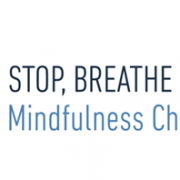What Are the Effects of Smoking and Vaping on COVID-19?
As one of the most preventable causes of death, smoking greatly increases the possibility of developing major long-term illnesses, especially those relating to the heart and lungs. Smoking is also known to weaken the respiratory immune system and increase the susceptibility to viral and bacterial infections. When the world is particularly keen on respiratory health today, we cannot help but question the effects of smoking and vaping on COVID-19.
Scientists first began predicting the relationship between smoking and COVID-19 through other well-known effects of smoking on similar respiratory infections. As seen from the doubled death rate in influenza patients who smoke compared to that of nonsmokers[1], tobacco products were also suspected to raise the severity of Coronavirus symptoms. Without surprise, this was confirmed through a recent study from Stanford. Its findings suggest that individuals who smoke or vape are at double the risk of developing severe symptoms of COVID. Adolescents and young adults who smoke and vape are 6.8 times more likely to catch the virus and 4.7 times more likely to have symptoms[2]. The research also emphasizes that smoking causes a significant increase in the risk of COVID-19 across all genders, races, and ages [2].
The behavioral aspect of first-hand smoking can also increase the risks of contracting COVID-19. Using unclean hands to put smoking devices and tobacco products into the mouth and near the nose can be dangerous. Smokers are also more likely to be outside without masks while smoking, and this absence of protection significantly increases the susceptibility to COVID. But smoking not only affects the first-hand smokers, but also their bystanders. The aerosol of second-hand smoke can heighten the spread of COVID due to the rapid diffusion of droplets[3]. Thus, smokers are highly encouraged to quit smoking by looking beyond the direct health benefits and keeping the community safe.
In these troubling times, we can all join efforts to fight COVID-19 and protect each other by stopping the use of smoking products. Actively participating in smoking cessation programs and events can lead to becoming more educated and developing healthier habits. Countless virtual resources are available to anyone who is seeking to build a better lifestyle regardless of gender, race, age, and culture. From the educational materials of California Youth Advocacy Network (CYAN) to the national quit hotline (1-800-QUIT-NOW), the start to a stronger “you” is more attainable than ever.
References
- Olds J, Kabbani N. Is nicotine exposure linked to cardiopulmonary vulnerability to COVID‐19 in the general population?. The FEBS Journal [Internet]. 2020 [cited 15 April 2021];287(17):3651-3655. Available from: https://febs.onlinelibrary.wiley.com/doi/full/10.1111/febs.15303
- Gaiha S, Cheng J, Halpern-Felsher B. Association Between Youth Smoking, Electronic Cigarette Use, and COVID-19 [Internet]. 2020 [cited 15 April 2021]. Available from: https://pubmed.ncbi.nlm.nih.gov/32798097/
- Li J, Martinez M, Frosch D. THE IMPACT OF SMOKING, COMORBIDITIES, AND RACE/ ETHNICITY ON COVID-19 INFECTION [Internet]. SNRT; 2021 p. 3-4. Available from: https://cdn.ymaws.com/www.srnt.org/resource/resmgr/conferences/2021_annual_meeting/SRNT21_Abstracts.pdf
Ga Young (Genesis) Seo is an undergraduate in UCLA majoring in Human Biology and Society. She is passionate about tobacco and smoke research and is also involved in California Youth Advocacy Network (CYAN) and Campuses Organized and United for Good Health (COUGH) to help collegiate campuses within California implement and enforce 100% smoke and tobacco free policies. She also aspires to become a dentist who is medically and culturally competent by continuously learning and promoting health accessibility through her practices.




